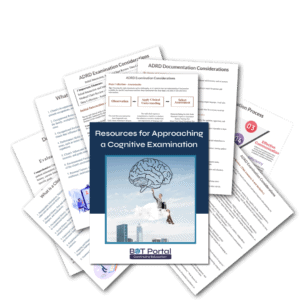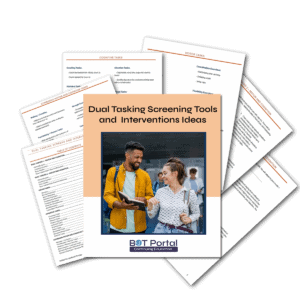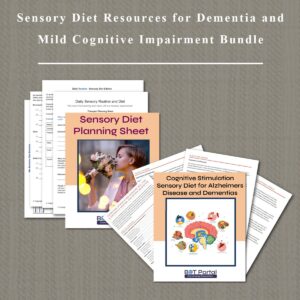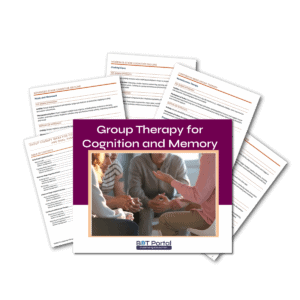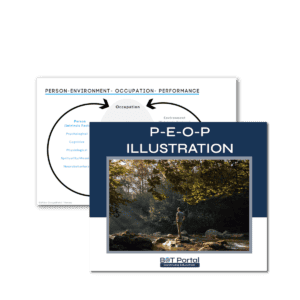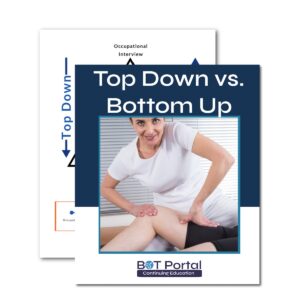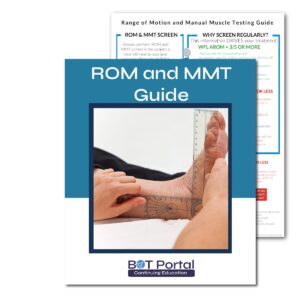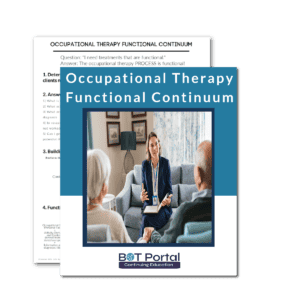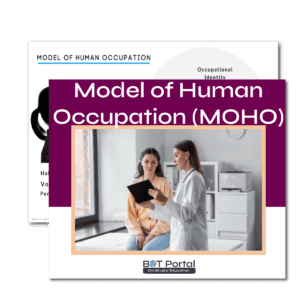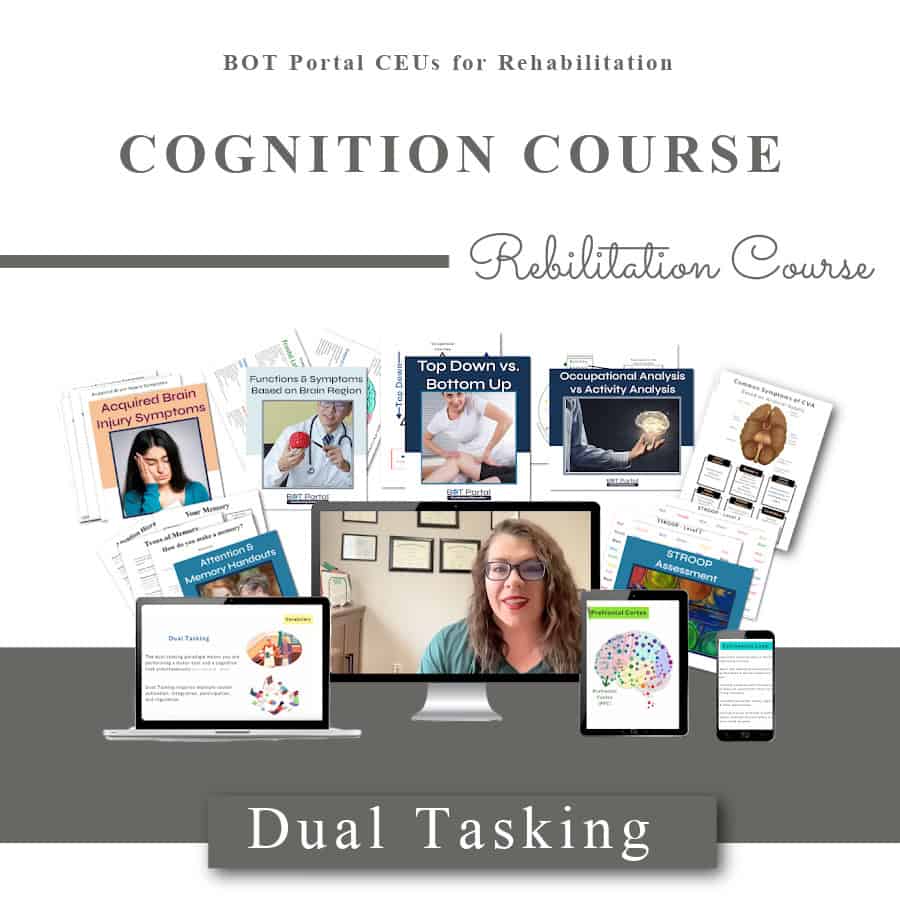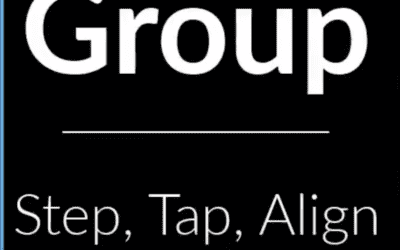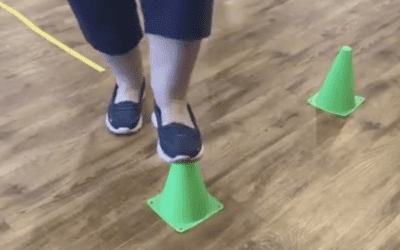

Goals for Cognition in Occupational Therapy
Occupational therapists should confidently claim their seat at the table when it comes to addressing goals for cognition and executive function. Treating these symptoms falls well within our comprehensive scope of practice. Identifying cognitive or executive dysfunction as a barrier to your client’s maximum functional potential necessitates that the restoration, remediation, and maintenance of these functions become integral components of your occupational therapy continuum of care.
Understanding the Importance of Cognitive and Executive Function
Cognitive and executive functions are critical for successful engagement in everyday activities. Cognitive functions include memory, attention, problem-solving, and processing speed. Executive functions involve higher-order cognitive processes such as planning, organizing, initiating tasks, and regulating emotions. Both sets of functions are essential for independent living and achieving personal goals.
Types of Cognitive Approaches in Occupational Therapy
In occupational therapy, cognition treatments are integral for enhancing occupational performance and fostering independence in individuals with cognitive impairments. Understanding the differences between functional cognition, cognitive remedial therapy, and adaptive memory techniques is essential for effective intervention strategies and maximizing functional outcomes.
Functional cognition treatments refers to the application of cognitive skills and strategies in real-life contexts to support engagement in meaningful activities and roles. Occupational therapists focus on improving an individual’s ability to perform daily tasks independently by targeting specific cognitive domains such as attention, memory, problem-solving, and executive function. Functional cognition interventions involve task-oriented activities, environmental modifications, and compensatory strategies tailored to the individual’s unique needs and goals. By incorporating functional cognition into therapy sessions, occupational therapists help individuals develop the skills and confidence needed to navigate daily life activities effectively and participate in meaningful occupations.
Cognitive remedial therapy (cognition treatments focused on remediation), on the other hand, involves structured exercises and activities designed to improve specific cognitive deficits through repetitive practice and skill-building. Occupational therapists use cognitive remedial therapy to target underlying cognitive impairments, such as memory deficits, attentional difficulties, or executive dysfunction. These interventions may include memory exercises, attention-training tasks, problem-solving activities, and cognitive training software programs. Cognitive remedial therapy aims to enhance cognitive function, promote neural plasticity, and improve overall cognitive performance, enabling individuals to better manage daily tasks and responsibilities.
Teaching adaptive memory techniques falls within the realm of functional cognition treatments, as it involves providing individuals with practical strategies and tools to compensate for memory deficits and support independent functioning in daily life. Occupational therapists teach individuals how to use external memory aids, such as calendars, planners, reminder apps, and memory notebooks, to organize tasks, schedule appointments, and recall important information. Additionally, therapists may incorporate cognitive strategies such as chunking, mnemonics, and rehearsal techniques to improve memory encoding, retention, and retrieval. By teaching adaptive memory techniques, occupational therapists empower individuals to overcome memory challenges, enhance task performance, and maintain independence in their daily routines.
How does Cognition work in an Occupational Therapy Plan of Care?
Explanation: An occupational therapy plan of care and treatment approach should always be a continuum. Secondly, the rehabilitation frame of reference (compensations and adaptations should be considered for immediate independence while you are restoring/remediating cognitive deficits OR at the end of your restorative plan of care when you know your client is on a maintenance track and requires an added assist to maximize independence.
Special note: If your client has a progressive neurological condition when you know at some point your they will require the procedural memory to use durable medical equipment, adaptive equipment, or assistive technology, it is appropriate to begin training during a restorative plan of care continuum. Your client will benefit from treatment sessions based in repetition even when it feels ‘silly’ because they are functioning well above level necessitating the equipment. In this case, take time educate your client and tell them why you are incorporating the training into their usual restorative sessions.
What is an example of the ‘OT therapeutic flow’?
- Comprehensive Evaluation including executive function AND physical performance.
- Include caregiver (if present) by giving them caregiver-based assessments while you perform the evaluation of your primary client.
- Establish baselines according to the reason you are seeing them
- Establish patient ‘buy-in’ and make sure you are on the same page
- Discuss plan of care and the path you believe will allow maximum return on time spent in occupational therapy
- Be sure to incorporate mobility AND cognition-based activities into each treatment session. Multi-modal is key!
- Monitor progress using objective measures, caregiver check-in
- Upon discharge, establish ‘next steps’ and ‘warning signs’ to ensure your clients know when to call occupational therapy for a screen, new evaluation, or consult for additional resources
Cognitive and Executive Function Goals in Occupational Therapy
Memory Enhancement:
-
- Activity: Engage clients in memory games or tasks that require recalling sequences or details.
- Goal: Improve short-term and long-term memory to support daily activities like remembering appointments or tasks.
Attention and Concentration:
-
-
- Activity: Use activities that require sustained attention, such as sorting tasks or puzzles.
- Goal: Enhance the client’s ability to focus on tasks for extended periods, crucial for work or home management.
-
Problem-Solving and Decision-Making:
-
- Activity: Simulate real-life scenarios where the client must make decisions or solve problems.
- Goal: Strengthen cognitive flexibility and problem-solving skills necessary for managing unexpected situations.
Planning and Organizing:
-
- Activity: Work on planning a small event or organizing a space within the client’s home.
- Goal: Improve the client’s ability to plan, prioritize, and organize tasks, which is vital for daily living.
Emotional Regulation:
-
- Activity: Implement mindfulness exercises and stress management techniques.
- Goal: Help clients develop strategies to manage and regulate emotions, reducing the impact of stress on daily functions.
Integrating Cognitive Goals into Occupational Therapy
Incorporating cognitive goals into occupational therapy involves a holistic approach that considers the client’s entire lifestyle and daily activities. Here are some strategies:
– Functional Cognitive Activities: Integrate cognitive exercises into meaningful activities. For example, cooking a meal can involve planning, sequencing, and problem-solving.
– Environment Modification: Adjust the client’s environment to reduce cognitive load and enhance function. This might include organizing spaces or using visual cues and reminders.
– Task Analysis: Break down complex tasks into smaller, manageable steps to support clients with executive dysfunction.
– Skill Generalization: Ensure that skills learned in therapy are transferable to real-world situations, enhancing the client’s ability to function independently.
Learn Dual Tasking!
Are you interested in Dual Tasking and why it is so important for an occupational therapy practitioner to address?
Look no further! You will learn different research-supported concepts of dual tasking to help guide your clinical understanding of Dual Tasking in Occupational Performance.
Bonus: It is an AOTA-approved CUE Course!
Stop feeling insecure and lost.
Don't wait for BURNOUT to consume your life because there just isn't enough time to search for evidence-based occupational therapy resources and training for daily clinical treatments.
Join the BOT Portal for occupational therapy resources and receive 24/7 access to the highest quality resources designed by an experienced therapist speciically for busy, motivated, and passionate therapists and therapy assistants.
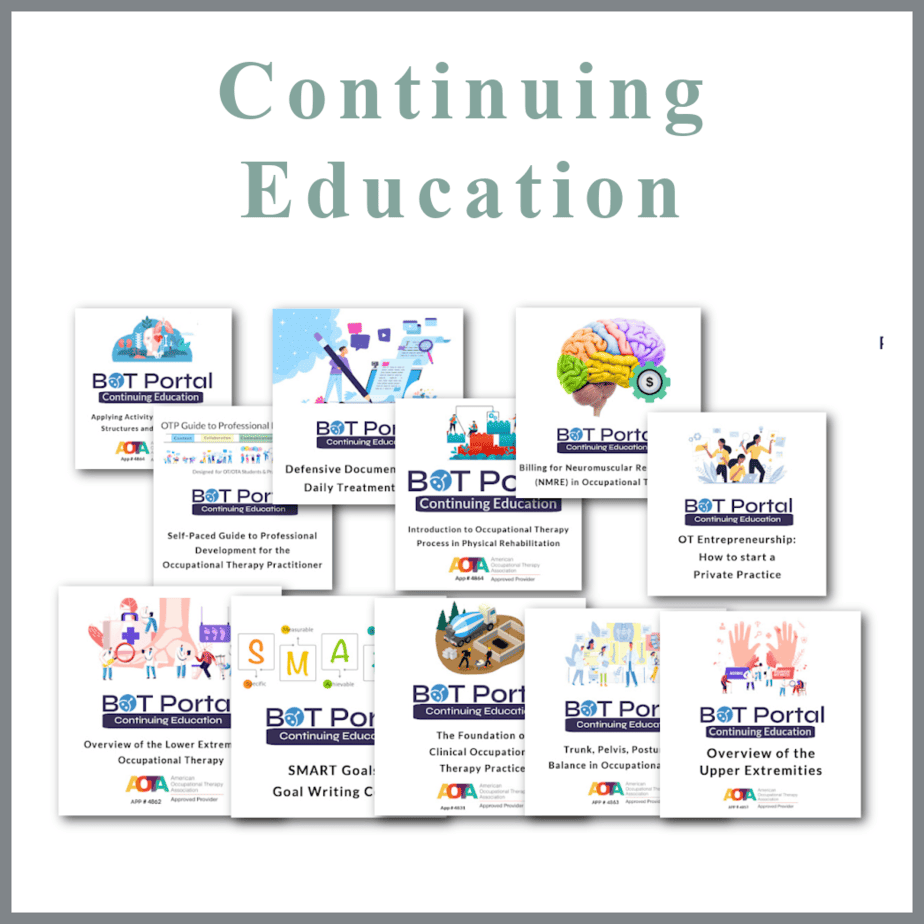
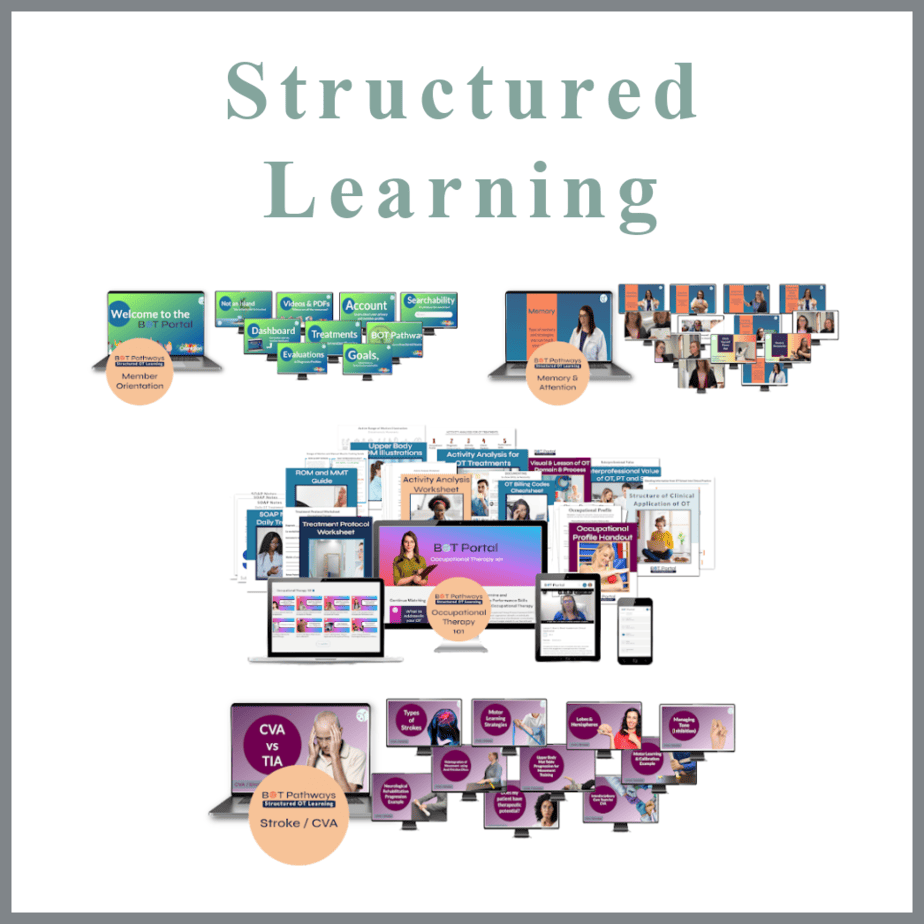
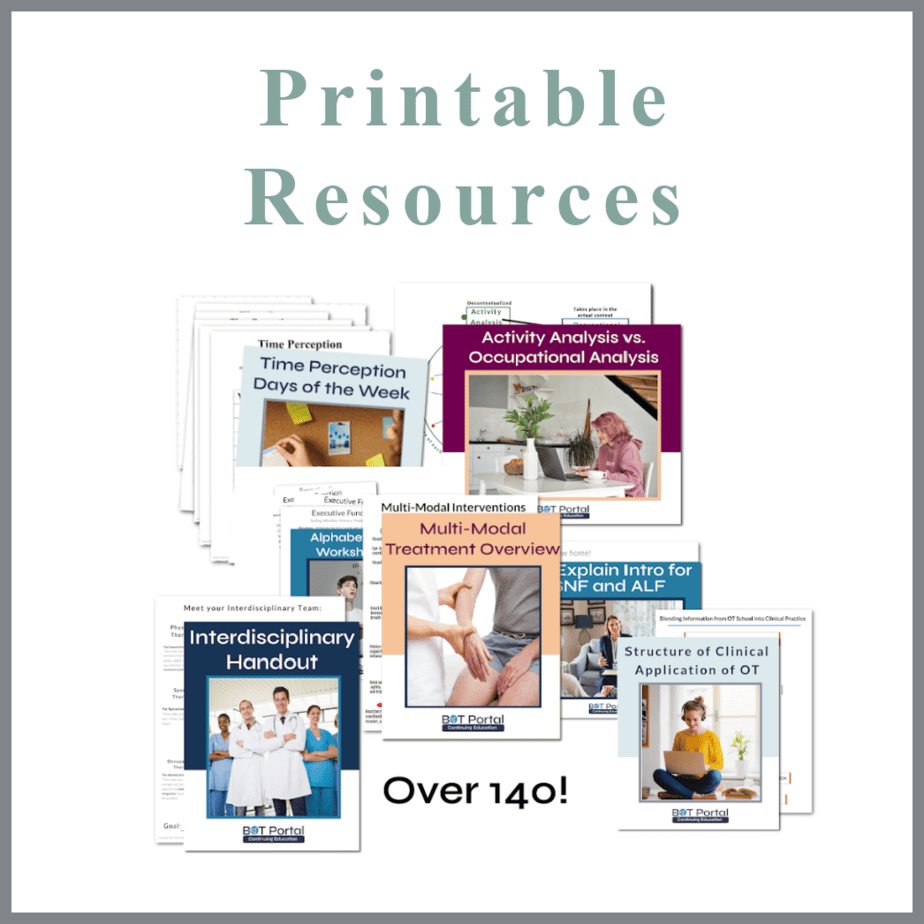
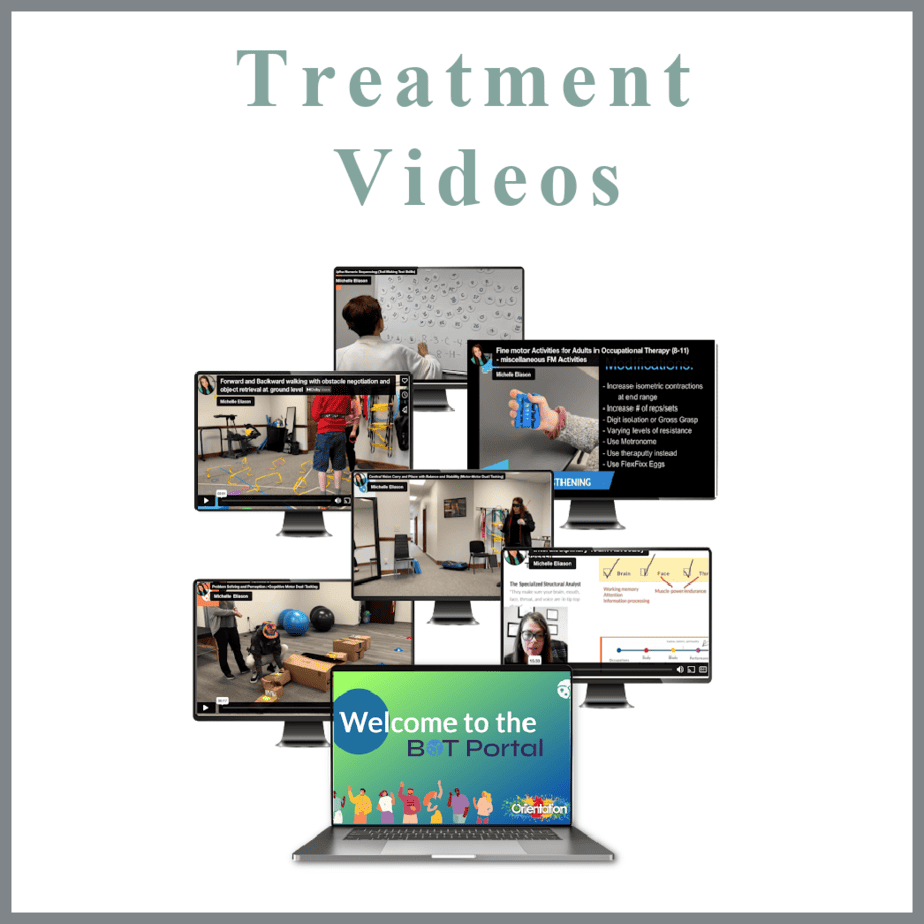
Membership Perks
Two Membership Options!
Your investment gives you resources to save you stress, self-doubt, and burnout as you become a confident and competent practitioner who can stand up for your professional point of view and scope of practice.
Simple Goals for Cognition
The patient will demonstrate knowledge and understanding of cognitive impairments in order to increase insight and independence in the occupational domain of health management and chronic illness as evidenced by patient-led verbal discussion diagnosis, symptoms, and solutions with xx weeks
The patient will demonstrate the ability to alternate attention between [number] tasks with accuracy of
The patient will demonstrate the ability to orient to person, place, time, and event with an accuracy of 4/4 over [number] of sessions with [xx] weeks.
The patient will demonstrate the ability to to solve complex problems as evidenced by completion of [name activity you use to measure complex problem solving] with an accuracy of [xx%] within [xx] weeks
The patient will demonstrate auditory memory skills as evidenced by completion of [name activity you use to measure auditory memory skills] with an accuracy of [xx%] within [xx] weeks
The patient will demonstrate improvement in working memory skills as evidenced by completion of [name activity you use to measure working memory skills] with an accuracy of [xx%] within [xx] weeks.
Goals Continuums and Progressions for Cognition
SLUMS
The patient will demonstrate an increase in executive functioning abilities in order to sustain optimal abilities to use crucial body functions and performance skills necessary to….See BOT Portal for more.

Executive Functioning Performance Test
The patient will demonstrate an increase in perceived executive functioning capabilities in order to sustain optimal performance in everyday life activities as evidenced by an increase of 10 points on the EFPT within 6 weeks.
Working Memory – 7
Emotional Control – 9
Sustained Attention – 8
Stress Tolerance – 7
Checkpoints:
- Complete WRAP plan for self-efficacy 25% (emo control and stress)
- 3-5 treatments addressing Sustained Attention and Working memory (longer than 10 minutes on one task) 50%
- 3-5 Progression to sustained plus selective attention for greater than 15 minutes, add working memory components 75%
- Maintain attention on problem solving activity requiring all components for more than 20 minutes 100%

ATTENTION CONTINUUM
The patient will demonstrate divided attention capabilities with environmental distractions as evidenced by 45 continuous minutes without patient or therapist-initiated rest breaks.
Checkpoints:
- Focused attention without unrelated conversation (25%)
- Sustained attention (vigilance/tonic alertness) for greater than 15 minutes (50%)
- Selective Attention and alternating attention for 25 minutes (75%)
- Divided attention for 45 minutes (100%)

Short Term Auditory Memory
The patient will demonstrate improvement in short term auditory memory…See BOT Portal for more.

Pre-Driving Rehabilitation
The patient will improve executive function, visual motor, and mobility related performance skills necessary to demonstrate driving readiness or indicate further evaluation and treatment by a Corrective Driving Rehabilitation Specialist as evidenced by meeting the following requirements:
Checkpoints:
[ The following short term checkpoints can be completed simultaneously or consecutively. ]
- MoCa Score of greater than 27 (20%)
- Clock Drawing Test of equal to or greater than 6 (20%)
- Trail Making B test less than 3 minutes and/or less than 3 errors (20%)
- Road Sign Worksheet of 85% or greater (51/59) (20%)
- Divided attention for greater than 30 minutes without distraction, fatigue, and/or confusion (20%)

Trail Making Test
The client will demonstrate an increase in executive functioning in order to maintain….See BOT Portal for more.

Cognitive Motor Dual Task ( Auditory Memory and Balance )
The patient will increase ability to engage in dual-tasking (cognitive-motor) activity requiring executive functioning and balance system engagement as evidenced by successful verbal recollection of 7-digit sequence in 8/8 trials while progressing through ground surface continuum.
Checkpoints:
- Verbal recollection of 5-digit sequence in 8/8 trials while standing on foam pad (25%)
- Verbal recollection of 5-digit sequence in 4/4 trials and 6 digit sequence 4/4 trials while standing on rocker board horizontal (50%)
- Verbal recollection of 6 digit sequence 8/8 trials while standing on rocker board horizontal/vertical (75%)
- Verbal recollection of 7 digit sequence 8/8 trials while standing on bosu ball dome down (100%)
Types of Memory Impacted in Cognition

Working Memory
Working Memory
Do you find it challenging to remember things you just learned or heard? This could be a sign of dementia.

Episodic Memory
Episodic Memory
Trouble remembering specific events or experiences from your past.

Immediate Recall Difficulty
Immediate Recall Difficulty
Struggling to remember information right after learning it.

Slower Retrieval and Rapid Forgetting
Slower Retrieval and Rapid Forgetting
Finding it takes longer to recall information, and forgetting things more quickly.

Prospective Memory Challenges
Prospective Memory Challenges
Difficulty remembering to perform tasks in the future without external reminders.

Autobiographical Memory Changes
Autobiographical Memory Changes
Memories across your lifespan become less detailed and more vague.
Examples of Cognitive Approaches to begin your Journey
Inpatient
Cognitive Orientation Exercises: Engage patients in reality orientation activities, such as discussing the date, time, and current events.
Memory Drills: Use repetition and recall tasks, like remembering a list of words or items.
Visual Scanning Tasks: Activities like word searches or locating objects in a busy scene to improve attention and scanning abilities.
Sequencing Activities: Have patients arrange steps of daily routines or simple tasks (e.g., making a sandwich) in the correct order.
Errorless Learning Techniques: Provide tasks where patients practice skills without making mistakes to build confidence and improve memory.
Skilled Nursing Facility
Cognitive Stimulation Programs: Group activities like trivia games, storytelling, or themed discussions.
Attention Training: Focused attention tasks, such as sorting objects by category or color under a time limit.
Reality Orientation Boards: Use daily boards to remind patients of the date, weather, and events happening in the facility.
Functional Dual Tasking: Incorporate dual-task exercises such as folding laundry while having a conversation.
Task Simplification and Gradation: Break down complex tasks into simpler steps and gradually increase difficulty based on patient progress.
Home Health
Home-based Cognitive Exercises: Use everyday activities like cooking, where patients follow recipes to enhance cognitive function.
Environmental Cues: Implement visual and auditory cues around the home to support memory and task completion.
Personalized Cognitive Training Apps: Recommend and assist patients in using apps designed for cognitive training.
Daily Routine Establishment: Help patients create and follow a structured daily routine to enhance memory and sequencing.
Attention and Focus Activities: Engage in tasks that require sustained attention, such as reading and discussing short articles or stories.
Outpatient
Cognitive-Behavioral Strategies: Use techniques to manage cognitive symptoms, such as setting goals and self-monitoring.
Community-Based Cognitive Tasks: Real-world tasks like planning a grocery shopping trip or navigating public transportation.
Computer-Based Cognitive Training: Utilize software programs designed to improve cognitive functions such as Lumosity or BrainHQ.
Group Cognitive Therapy Sessions: Facilitate group sessions focused on cognitive exercises and social interaction.
Mindfulness and Relaxation Training: Teach mindfulness practices to improve attention and reduce cognitive fatigue.

